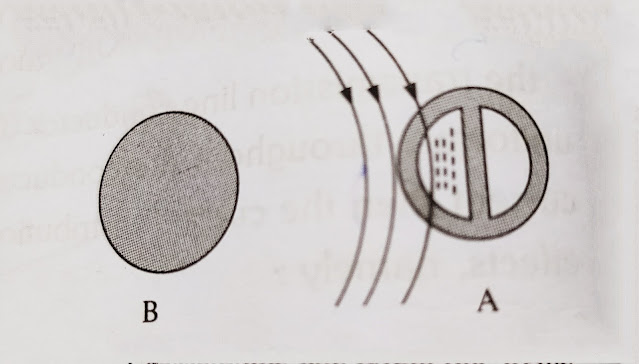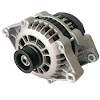Current Distortion Effects
If the transmission lines conductor carries steady current (D.C), the current is distributed uniformly throughout the conductor and if the same conductor carries an alternating current then the current distribution in the conductor is distorted due to the following effects, namely:
1. Skin Effect
2. Proximity effect
3. Spirality Effect
4. Kelvin’s Law
1. Skin Effect: The crowding of alternating current
on the surface of a conductor is know as “Skin
Effect”.
Due to skin effect,
the effective area of cross-section of the conductor through which current flow
is reduced. Consequently, the resistance of the conductor is slightly increased
when carrying an alternating current.
The skin Effect depends, upon the following factors, namely
(i) Nature of the
material
(ii) Diameter of wire: It increases with diameter of wire.
(iii) Frequency: Increase with the increase in
frequency.
(iv) Shape of wire: Less for stranded conductor that the
solid conductor.
Skin effect increase with the increase in frequency,
conductor diameter and permeability.
Skin effect is neglisible at frequencies below 50Hz and the
diameter of the conductor below 1cm.
Example: For 2cm diameter conductor = skin
effect is 2.5 %
2.5cm diameter conductor = skin effect is 8 %
2. Proximity Effect: if the field due to return conductor is considered then this effect is called “proximity Effect”.
Due to this effect
the current will be concentrated/crowded on one half side of conductor.
Considering two solid round conductors A and B lying comparatively
close together, the flux due to B cutting near half of A IS greater than the
flux cutting the remote half of A. Hence the current distribution over the
cross section of A is distorted as show in fig
This effect is more increase of large conductors and at high
frequencies.
This effect is disappeared in case of stranded conductor
because the conductors are spiraled.
3. Spirality effect: This effect is mainly depends on
size and method of construction of the conductor. Due to spirality effect it increases
both resistance and internal reactance of a standed conductor.
4. Kelvin’s Law:
Economic size of the
Transimission line conductor [Kelvin’s Law]
The size of conductor plays a vital role in total cost of the
transmission line. Hence, it is very necessary to determine most economical
size of the conductor in the transmission lines.
In 1881, Lord Kelvin
stated that the most economical are of the conductor is that for which the
total annual cost of transmission line is minimum. Hence, this law is named as Kelvin’s Law.
The total annual cost of a transmission line can be divided
into two parts, namely
(i)
Annual
charge on capital cost.
(ii) Annual cost of energy wasted in the conductor.











0 Comments